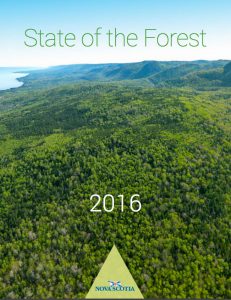 Back on April 14, 2017 I commented that it was “Time for the overdue State of the Forest Report with the complete numbers! The last State of the Forest Report was in 2008; the next one was scheduled for Feb. 2013 but has not yet appeared.”
Back on April 14, 2017 I commented that it was “Time for the overdue State of the Forest Report with the complete numbers! The last State of the Forest Report was in 2008; the next one was scheduled for Feb. 2013 but has not yet appeared.”
Sometime between then and now, the report, dated April 2016 and labelled State of the Forest 2016, has appeared on the NSDNR website under Forestry/News and Current Information. (It seems there is no associated Press Release, so I can’t determine exactly when it was posted.) View Report
The executive summary highlights the following:
Indicators with extensive historical data have provided measurable trends to report changes in our forests since 2005. For example, most fires are caused by humans and the greatest number occur in spring. Nova Scotia forests have become a carbon sink since 2009, storing more carbon than what is being lost during forest harvesting. Long-term estimates of available softwood and hardwood fibre illustrate provincial harvest levels are ecologically sustainable.
Importantly, Nova Scotia remains relatively wild – large areas exist where roads or trails are not established. Just fifteen years ago, an estimated 1 per cent of forests were protected from development. In 2016, over 12 per cent of forested land is protected province wide for various conservation reasons. The amount of public land in the province increased with the purchase of the former Bowater Mersey Paper Company Limited lands in 2012.
The forest industry in Nova Scotia is clearly changing. The idling of mills and mill closures demonstrate the globalisation of the forest products and pulp and paper industries. New models to manage Crown land are being explored. Innovative efforts relying on technological advancement such as those at the former Bowater Mersey Paper Mill site signal advancement and further changes in the products forests can produce. Government is helping to sponsor efforts to examine what markets are emerging for wood fibre and how to capture the highest value.
The Department of Natural Resources is committed to advancing the practice of ecosystem-based landscape scale management. Indicators selected for this report demonstrate this commitment, as well as progress to implement the Code of Forest Practice (2012).
It will take a while to digest this report.
————–
Thx to DA for letting me know the report had been posted.
